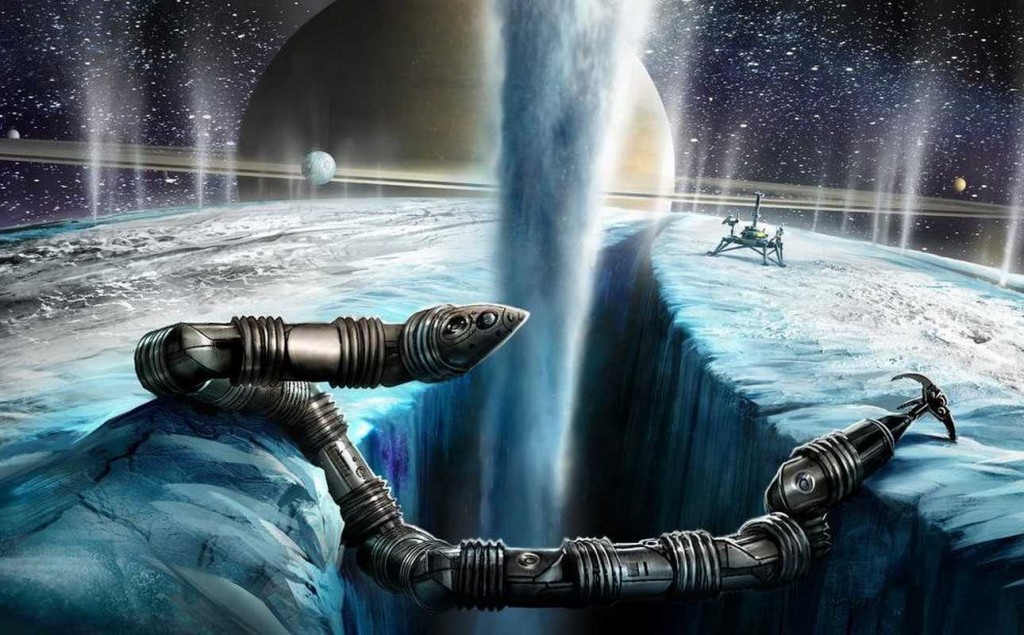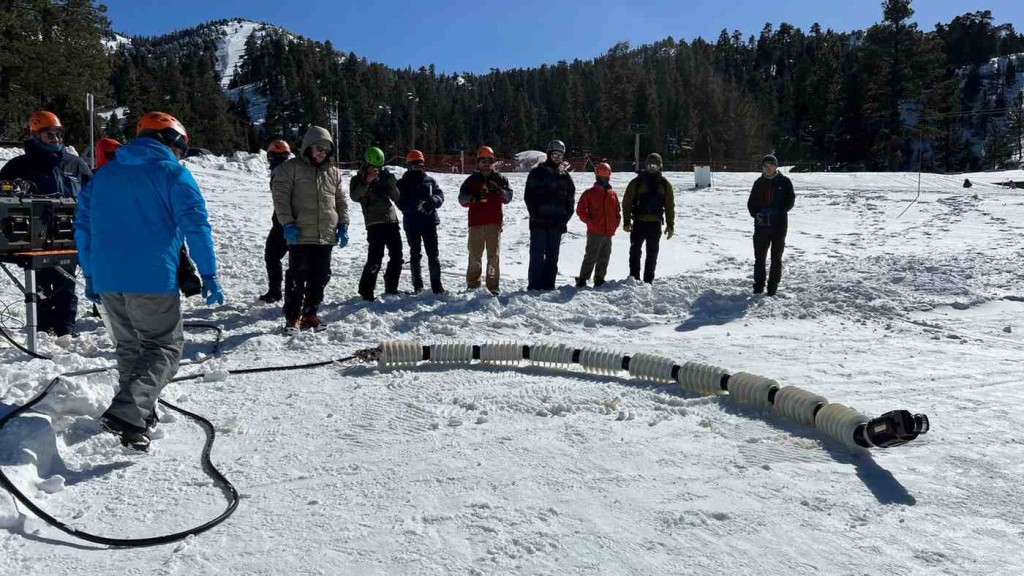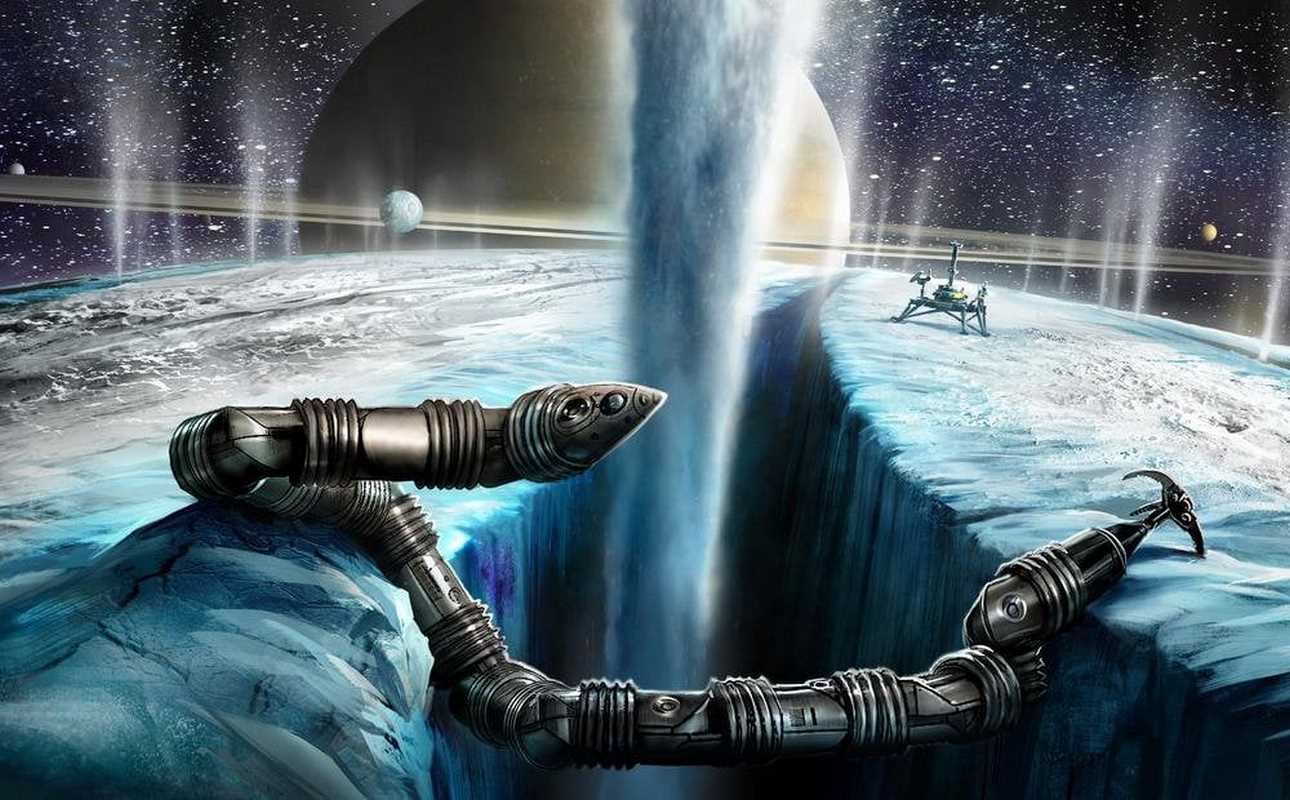
NASA is testing an all-terrain slithering robot to explore tunnels, glaciers, and snowdrifts on Saturn’s icy moon of Enceladus.
The 13-foot-long (4 meter) machine is called EELS, or the Exobiology Extant Life Surveyor, owing to theories that the icy-covered world of Enceladus may have a subsurface ocean of liquid water—one of the solar system’s best places to look for signs of extraterrestrial life.
For nearly 30 years, robotic rovers have retained the same buggy-shape and design, from the original Pathfinder Rover in 1996 to Perseverence in 2021.
But these have been designed to travese deserts like the Moon and Mars—covered in a loose mixture of sand and crushed rock known as regolith. Enceladus presents an entirely different set of challenges.
“It has the capability to go to locations where other robots can’t go. Though some robots are better at one particular type of terrain or other, the idea for EELS is the ability to do it all,” Matthew Robinson, EELS project manager, says in the statement.
“When you’re going places where you don’t know what you’ll find, you want to send a versatile, risk-aware robot that’s prepared for uncertainty—and can make decisions on its own.”
The autonomous robot is being tested in undulating sand and ice, along steep cliffs, gaping craters, underground lava tubes, and even narrow spaces within glaciers.
The robot weighs about 220 pounds (100 kilograms), and is made up of 10 segments with exterior panels shaped like an uneven screw that will allow it to slither along. Stiffer tread in between the joints will help it move on slippery ice.
MORE NASA NEWS: To Unravel Earliest History of Our Solar System, NASA’s Lucy Mission Launches Toward Asteroid Swarms Tomorrow
It’s designs will include technology to allow it to make its own decisions about how best to move over any given terrain, since telecommunications with the Earth would take multiple days.

“There are dozens of textbooks about how to design a four-wheel vehicle, but there is no textbook about how to design an autonomous snake robot to boldly go where no robot has gone before. We have to write our own,” stated Hiro Ono, EELS principal investigator.
However there’s no time to lose, since it will take 12 years for a lander to deliver EElS onto the surface of the moon.
MORE FUTURE SCIENCE MISSIONS: Work Set to Begin on Asteroid Hunting Observatory—NASA’s New Mission to Protect Earth from Disaster
Enceladus has become one of the most interesting bodies in the solar system. The Cassini deep-space probe revealed a variety of extremely interesting features, including an active molten core that powers icy geysers which eject plumes of methane gas, dust, and ice.
The core’s heat is believed to have created a salt water ocean lying under the frozen surface where over billions of years, the conditions for life to evolve on its own would be protected from the hostile world above and space beyond.
Even if it were never to see action in space, the robot is already being tested here among the glaciers of Earth, and could be valuable for getting to know our own world.
WATCH it move through various terrain in testing…
SHARE This Totally Sci-Fi Attempt At Robotic Exploration With Your Friends…





















since it will take 12 years for a lander to deliver EElS onto the surface of the moon.
why!! Why so long?